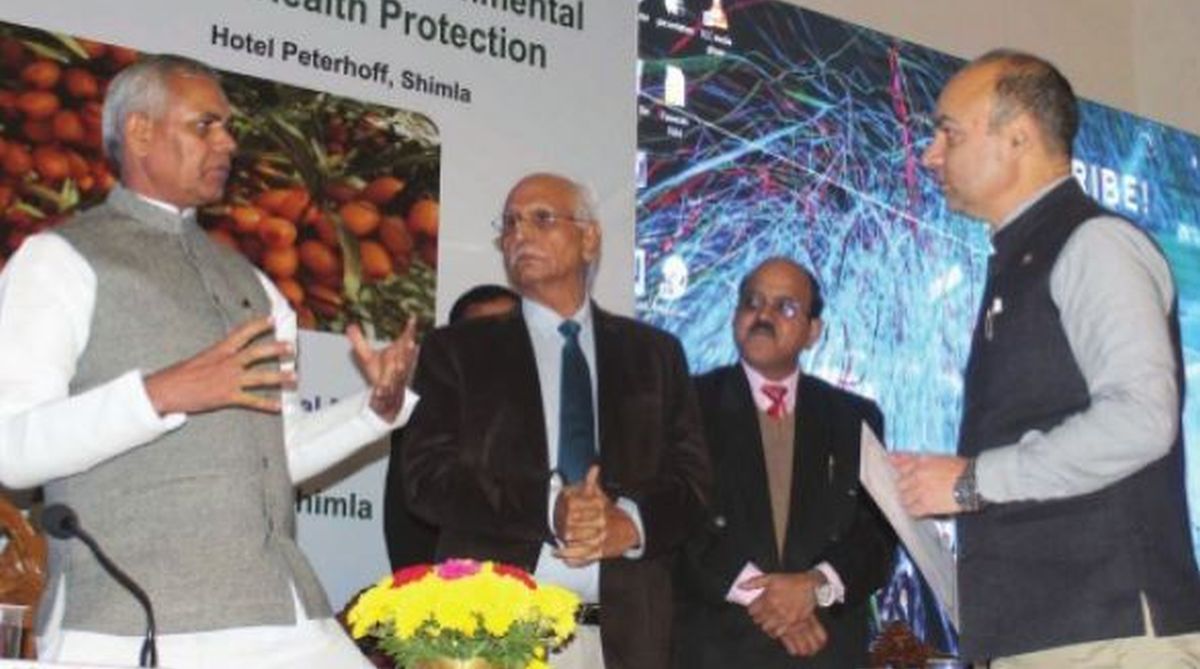Himachal Pradesh Governor, Acharya Devvrat on Tuesday asked the scientists of CSK Himachal Pradesh Krishi Vishvavidyalaya (CSKHPKV) Palampur to work in coordination with state forest department and involve farmers in the cold desert of Lahaul and Spiti in its plantation.
This would improve the economy of the farmers in the border area, thereby checking the exodus, and would help conserve environment.
Advertisement
“The scientific research should not be of any use till it is given a practical form,” he said, while addressing the national Conference on Seabuckthorn, jointly organised by Sea-buckthorn Association of India, CSKHPKV and Himachal Pradesh State Biodiversity Board at Shimla.
He said much work has been done on Sea-buckthorn over last three decades in the state, for which the scientists deserve appreciation. However, it was time they reached the farmers with their research and technology.
Devvrat asked the forest officials in the conference to convene a meeting with the scientists of Palampur agri-varsity on Sea-buckthorn, while involving him.
He said Seabuckthorn has medicinal properties and there is a lot of demand in the market of its product. The soldiers deployed on the border could be protected from many diseases by its use, he said.
He added that it could be the main means of livelihood to the farmers in Lahaul Spiti and Pangi area of Himachal and asked the varsity scientists to publish literature in the local language and to organise seminars in that area to motivate the people of that area.
The Governor gave away awards to the scientists from Palampur agri varsity and other states for research on different aspects of Seabuckthorn.
Earlier, Dr RC Sawhney, President, Seabuckthorn Association of India said that near about 70 technical Institutions were working to develop this plant, which is cultivated in five states. He said that Leh area was known for its highest production and India has been established three species of it.
Vice Chancellor, GB Pant University of Agriculture & Technology, Pant Nagar, Dr Tej Pratap, detailed on history and international scenario on Seabuckthorn. He said China had developed 250 products out of Seabuckthorn, but India not been able to replicate the Chinese success story of Seabuckthorn. He said steps should be taken with reference to other countries to increase the pace of development of Sea-buckthorn.
Padma Shree awardee and former director of Defence Research and Development Organisation (DRDO) Dr Brahma Singh said the DRDO ad developed Seabuckthorn health products, which can be used for acclimatisation of Indian army personnel in high altitude areas.
VC, Agriculture University, Palampur, Prof Ashok Saryal, Prof. Virender Singh, organizing secretary, SAI, Senior Scientific Officer, HP Council for Science, Technology and Environment, Shubra Banerjee, Shimla also spoke.
So far, Seabuckthorn grows naturally on forest land in the cold desert of Lahaul and Spiti. The Palampur agri-varsity as done some plantation for demonstration on the private land in Chandrabhaga valley, with 52 per cent success of plants. The forest department has so far not taken any initiative to promote the farmers take up cultivation of Seabuckthorn on forest land in the cold desert in Himachal.









